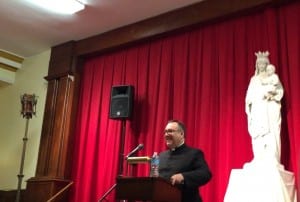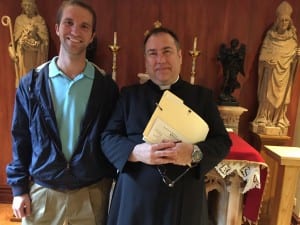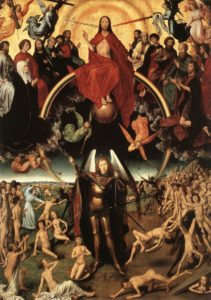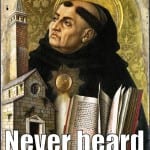Sacred Liturgy Conference 2014

 This weekend I attended a conference given by Fr. John Zuhlsdorf on the Sacred Liturgy at my home parish, St. John Cantius. I have been visiting his blog off and on for a number of years and find his contributions lucid and full of common sense. If you haven’t yet, take a look: wdtprs.com. I want to give here my interpretation of what he said, summarized.
This weekend I attended a conference given by Fr. John Zuhlsdorf on the Sacred Liturgy at my home parish, St. John Cantius. I have been visiting his blog off and on for a number of years and find his contributions lucid and full of common sense. If you haven’t yet, take a look: wdtprs.com. I want to give here my interpretation of what he said, summarized.
“Fr. Z” explained the true nature of active participation in the liturgy according to Vatican II. The Mass he said is sacrificial in nature, and requires the priest and the lay involved to know their parts which are distinct, sometimes requiring synchronization of thought/action/prayer and sometimes not. The priest offers sacrifice to God on behalf of the people — this is what priests – Catholic, pagan or otherwise do. ‘Ministers’ do not do this. The language of the Mass is only part of the ineffable experience of Mass– of God –and the experience of God is more important than the words which though important, fall short.
It has often been said that in the ‘old Mass’ the people were just idle spectators. This may or may not have been true — but they certainly shouldn’t have been idle. Active (or actual) participation is often receptive and requires great effort on our part to listen to God — something which may often seem like we are doing nothing – but really this is what it means to listen and be receptive. To just “be” is an especially accessible state in the extraordinary form of the Mass where at points the priest and people have prayer in common and at other points the priest’s role is done on behalf of the people, who can unite themselves to him as the head through their own prayers, or by following what he is praying in the missal. If you can’t hear what the priest is saying at certain points — that’s ok — he probably isn’t talking to you. At this point you have a unique opportunity not frequently available in the Novus Ordo to leave words behind and actively enter into the silence of ‘just being.’ with the literal and figurative body of Christ. If you have the time or patience, the movie “Into Great Silence” makes this point very loudly.
He also referred to Pope Benedict XVI’s analogy of the liturgy being an opportunity to peer into the heart of Jesus as the lance of the centurion that pierced it. The Mass pierces time and into the heart which sends oxygen to the body of Christ throughout the world, and we all participate in the process in different ways according to the type of priesthood we have, either by baptism or ordination. But by ensuring that the liturgy is carried through according to the proper art of celebrating (ars celebrandi) with attention to the required details of the rite, we align ourselves more perfectly with the communal pulse throughout the world– the heartbeat of Christ to which we must listen. This heartbeat gives us an experiential knowing of the person of Christ, a receptive participation far more profound than the mere singing of any song or reciting of any words.
In one of his talks he mentioned a book I appreciate very much called The Holy Sacrifice of the Mass: Dogmatically Aesthetically and Liturgically Explained. I highly recommend it to anyone trying to learn what it means to experience the ineffable in Mass rather than just stay on the intellectual level only. More on that topic here.



